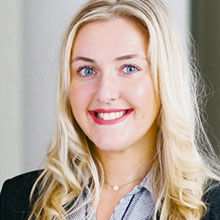If Covid was a storm, it’s fair to say the life sciences sector has not only weathered it, but is well on its way to curing it too, writes Chloe Gibson of law firm Mills & Reeve.
Pre-Covid (yes, such days did exist), the life sciences sector was already flourishing but the global pandemic has undoubtedly catapulted it into the national spotlight.
During a year of lockdowns and various restrictions, all eyes were pinned on the sector to provide the route back to ‘normality’. It did so in record time and the Cambridge-Oxford Arc has played a pivotal role with the deployment of the Oxford/AstraZeneca vaccine.
Oxford’s life science experts also discovered through the large-scale RECOVERY trial, that dexamethasone could cut Covid-19 deaths by up to a third. The gradual return of our freedom is testament to the array of knowledge, skill and talent that permeates the sector and the Arc itself.
Some recent examples which demonstrate the acceleration of the Arc:-
Oxford North – a new £500 million life sciences district Thomas White Oxford, the development company of Oxford University’s St John’s College, has been granted outline planning consent for its masterplan for a new 64-acre life sciences district in Oxford. The district will eventually comprise one million sq ft of new laboratories and workspaces whilst also supporting the needs of local residents by providing 480 new homes and improving road infrastructure.William Donger, director of Thomas White Oxford said the decision “unlocks a bold vision to transform the area to build a global innovation district” and will “deliver positive socio-economic impacts.” The Oxford Science Park (OSP)
Kadans Science Partner has expanded its growing European portfolio with the acquisition of The Sherard Building at OSP. The building is wholly let to Oxford Sciences Innovation which is using the 28,000 sq ft of space to support early stage life sciences being spun out of the University of Oxford.
The transaction builds on Kadans’ recent activity in the region, following its acquisition of The Science Quadrant, in Abingdon.
Also on the hunt to capitalise on increased investor appetite for this sector is Magdalen College Oxford, who own the entirety of OSP. They are searching for a new partner to take a 40 per cent equity share to accelerate development of circa 15 acres of land at the park.
Rory Maw, director of the science park, said that bringing in a strategic partner would “further the discovery, innovation and entrepreneurship taking place” at the park, which is already home to more than 100 globally-recognised life science tenants.
Acquisition of 310 Cambridge Science Park
As Business Weekly recently reported, Canadian based Oxford Properties Group has chosen the Arc as the location for its first European life sciences investment.
Their £45 million off-market acquisition of 310 CSP (currently fully let to AstraZeneca) highlights the attraction of joining the one of the most established life sciences campus in the UK. 310 CSP comprises 59,000 sq ft of fully fitted laboratory space and ancillary office accommodation, with around half fitted out as high specification wet labs.
Encouragingly, its ambition does not appear to stop there. With an intention to deploy £1.2 billion into the European life sciences market by 2026, the Arc looks set to be a key beneficiary.
Abby Shapiro, senior vice president and head of life sciences at the group commented: “Oxford’s initial European focus will be on the UK, where we are actively seeking opportunities in the ‘Golden Triangle’… given the relative low levels of existing supply, we will look to utilise our world-class development expertise to help provide the critically needed lab infrastructure.” Watch this space. Whilst more traditional asset classes (such as office and retail) have borne the brunt of the virus-ravaged economy, life sciences have emerged fairly unscathed.
Given that laboratory-based research and development professionals cannot work from home, the sector has been somewhat immune from the more probing questions surrounding viability as a future income stream; something that cannot be said for its counterparts.
Increasing investor appetite (Savills predicts that investment in UK life sciences real estate will hit £550m in 2021) and a demand from occupiers that far outstrips supply (it is forecast that 20m sq ft of commercial space will be needed in the Arc over the next 20 years to keep up with demand, the sector is perfectly poised to take advantage of the future growth opportunities. Nowhere is this more evident than the continued acceleration of the Cambridge-Oxford Arc.
• You can find out more about the future of Science Parks and the real estate sector here: ‘Mapping the FutuRE’ initiative.

